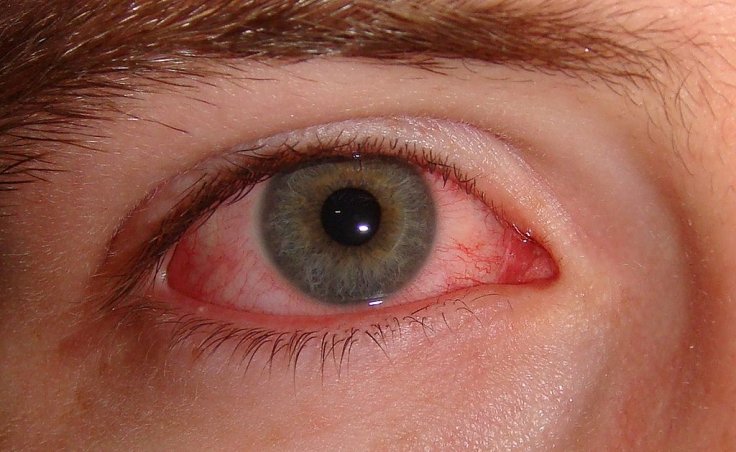Over the last few months, doctors and scientists have warned of various ways Coronavirus can infect a person. Thus, face mask and gloves have been suggested to prevent a person from contracting SARS-CoV-2 that causes COVID-19. However, in recent times, eyes have been discussed as another entry point for the virus.
On Wednesday, July 29, Dr Anthony Fauci, a top infectious disease expert in the U.S., suggested that goggles or eye shields could add that extra layer of protection from the novel Coronavirus. It has not been proven yet or recommended by the World Health Organization (WHO) but eyes have been considered an entry point due to the presence of mucosa. Like inside the nostrils and mouth, the mucosa is present in the eyes.
"It might. You have mucosa in the nose, mucosa in the mouth, but you also have mucosa in the eye. Theoretically, you should protect all the mucosal surfaces," Dr Fauci told ABC News, adding that an eye shield would offer an extra protective layer. "If you have goggles or an eye shield, you should use it."

Dr Joseph Fair raised the concern in May 2020 when he contracted COVID-19 despite wearing a mask and gloves. He believed it was his eyes through which the virus made its way into the body when he was traveling in a crowded plane.
Study on The Possibility of Eyes Being Entry Point
While critics have denounced Dr Fauci and his claims as it is not recommended by the CDC or WHO, there is truth to this. In the past, studies done on other viruses, including adenovirus (that causes the common cold) and herpes simplex virus, showed that it could infect eyes. Taking a cue from that, Dr Elia Duh, a researcher and professor of ophthalmology at the Johns Hopkins School of Medicine in Baltimore, believes "the clear tissue (conjunctiva) that covers the white of the eye or sclera can be infected."
"If there are droplets that an infected individual is producing by coughing or sneezing or even speaking, then the front of the eyes are directly exposed, just like the nasal passages are exposed. In addition, people rub and touch their eyes a lot. So, there's certainly already the vulnerability," Dr Duh told WebMD on chances of eyes catching Coronavirus.
Dr. Anthony Fauci to @DrJAshton: "If you have goggles or an eye shield, you should use it. It's not universally recommended, but if you really want to be complete, you should probably use it if you can." https://t.co/SJPZn8fN6F pic.twitter.com/Ml87aBuclI
— ABC News (@ABC) July 29, 2020
Dr Duh and his colleagues conducted a study, which is being peer-reviewed, on the subject to see if eyes contract SARS-CoV-2. During the study at Johns Hopkins, they examined 10 eyes following an autopsy and five samples of conjunctiva from patients who did not have Coronavirus. Their aim was to see if the ACE2 receptor (of Coronavirus) was produced by the eyes' surface cells. The virus latches on to the ACE2 receptors.
They also found that eyes' surface cells produced TMPRSS2 enzyme that helps the virus enter a cell. "We were really struck that ACE2 was clearly present in the surface cells of all of the specimens," Dr Duh said.
The team of researchers also found eyes as a source of transmission of the virus to others if someone rubs their eyes and then touches someone else or touches a surface. The virus can also stay longer.
In a case, that the team studied, a woman with COVID-19 had conjunctivitis and the virus was detectable even three weeks after she started showing symptoms. "The virus has been detected in tears and conjunctival swab specimens from individuals with COVID-19. So, that kind of transmission mechanism could occur," Dr Duh said.

What Other Doctors Say
Dr Duh and his team or Dr Fauci are not alone to believe in the theory. Dr Edward Manche, professor of ophthalmology at Stanford University Medical School, and Dr Nida Sen, Director of the Uveitis Clinic at the National Eye Institute in Bethesda, also believe it's "biologically plausible".
"I think it's widely believed now that you can acquire it through the eye. The way the virus works, it's most commonly transmitted through the mouth and nasal passages. We have mucosal tissues where it can get in," he said adding that eyes would be the least common mode of transmission.
However, the WHO and the U.S. Centre for Disease Control and Prevention (CDC) believe they don't have enough data to suggest that eyes are possible entry points. But CDC recommends wearing eye shield in a healthcare setup and WHO suggests not to touch eyes. Other doctors say there is no harm in that extra layer of protection.









